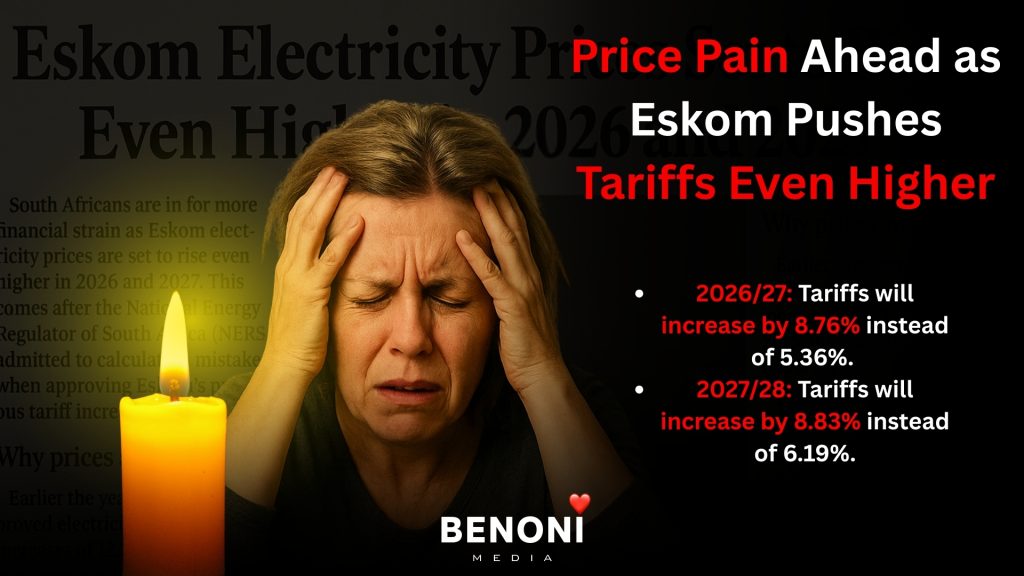South Africans are in for more financial strain as Eskom electricity prices are set to rise even higher in 2026 and 2027. This comes after the National Energy Regulator of South Africa (NERSA) admitted to calculation mistakes when approving Eskom’s previous tariff increases.
Why prices are going up
Earlier this year, NERSA approved electricity price increases of 12.74% for 2025/26, 5.36% for 2026/27, and 6.19% for 2027/28. However, Eskom challenged this decision in court, claiming there was a massive shortfall of R107 billion between what it applied for and what was approved.
During the review, NERSA discovered it had made several errors. These mistakes were linked to depreciation calculations and the valuation of Eskom’s power generation assets. As a result, Eskom had not been allocated enough revenue to cover its operations.
The settlement agreement
To avoid a lengthy legal battle, NERSA and Eskom reached a settlement. Eskom will now receive an additional R54 billion spread across the next three years, far less than the R107 billion it originally claimed but still a huge adjustment.
This money will be recovered through higher Eskom electricity prices, which will directly affect households and businesses.
How much more you’ll pay
For the current 2025/26 financial year, there will be no changes to electricity prices. But starting in 2026, the increases will be steeper than first planned:
- 2026/27: Tariffs will rise by 8.76% instead of 5.36%.
- 2027/28: Tariffs will rise by 8.83% instead of 6.19%.
These increases are more than double the expected inflation rate of around 3.5%. This means electricity will become a lot more expensive compared to other living costs, putting extra pressure on already stretched household budgets.
What it means for South Africans
The phased approach is meant to soften the blow, but the reality is that Eskom electricity prices will still climb much faster than inflation. This could fuel even higher living costs across the country and make it harder for the Reserve Bank to keep inflation under control.
For consumers, it means planning ahead for steeper electricity bills in the next two years and possibly cutting back on usage to manage costs.
